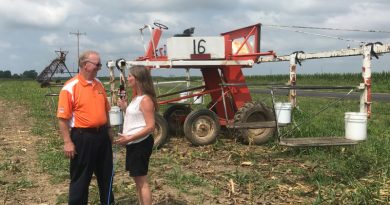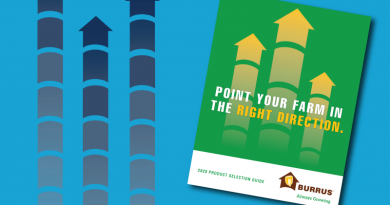Evaluating Population Decisions
We are in a timeframe that provides an opportunity to assess our work done throughout the growing season. Now is the prime time evaluate population decisions made and see the resulting differences. There is no doubt every year provides its unique set of challenges; luckily, there are subtle signs to see if we got our planting populations correct in both corn and soybeans.
Soybean Population Evaluation
Soybeans have an amazing ability to adjust their plant structure in response to varying populations. Granted, there are obvious structural differences in each variety, but there are common clues to look for. Under higher populations plants are taller and exhibit less branching, leading to fewer pods per individual plant.
The height of the lowest pod can be a good indicator if we got our population correct. Behind varietal differences, plant population is the next dominant factor influencing pod height. If pod height is over four inches off the ground, we likely have too high of a population given the conditions at hand. Adversely, if pods are close to the ground we need a slightly higher population. It is also common to fluctuate pod height within a field. More productive areas of the field will pod lower on the main stem compared to stressed areas of the field. Therefore, it is important to look at multiple areas to get an accurate representation.
Another item to pay attention to is stem diameter. There is a clear relationship between lodging and stem diameter. If we are pushing it below ¼” the chances of lodging are dramatically increased. The appropriate response is to lower the population to shorten plant height and encourage more branching. The more nodes per acre we can generate, our chances of optimizing yield increase as well.
Corn Population Evaluation
In corn, the ear will tell you whether populations were adequate by exposing some cob with no or unfilled kernels at the tip of the ear. We refer to the phenomenon as “tip back”. There are inherent differences between hybrids and management definitely plays a role, but again, plant population is significant in this response. Having some tip back is healthy and we should strive for around a half inch. You might ask, “Why would we want that amount?” If we do not observe tip back, we have not pushed the population high enough to maximize the resources and growing conditions in that environment. On the other hand, if we observe more than an inch of tip back, our planting populations are probably too high and don’t have the necessary resources to support that density.
My other strong suggestion is to monitor the fields with tip back from now until harvest is complete. Why? Plants short on resources for full reproduction often rob these resources from the rest of the plant. In essence, too many kernel sites can create compromised stalks leading to late-season lodging.
The key to managing unpredictable stress is using diversity as a tool. Think about Burrus Seed corn and soybean products offering multiple genetic and trait sources. Using a spread in maturity is still a valuable risk management tool. Multi-year, multi-location testing can reduce concern for unmanageable and unexpected stress. From this research, there are tools available to develop a planting plan to optimize your yield potential on the individual field level. Let your Burrus Representative help you position the best fit products at the correct populations in your fields.
written by Dana Harder, CCA – Burrus Seed Field Agronomist






